The ultimate
virtual organ
B-3 V captures all the grit, grind, and greatness of the classic tonewheel organ and rotary speaker, then adds modulation, FX, and sound design options perfect for modern music.
Vital to rock, jazz, gospel, R&B, soul, reggae, and house, the iconic organ could go from gentle to roaring on a dime. Players carried the 400-pound beast to gigs. Any serious studio had to have one. With B-3 V, you’ll have all the character and attitude of the genuine article in a form that fits seamlessly into today’s musical workflows.
Yesterday, Meet Tomorrow
First things first: B-3 V takes this organ’s incredible legacy seriously. But the power of software also performs tricks you couldn’t dream of on the original.
Absolutely Authentic
We’ve precisely modeled the tonewheel organ’s components and how they interact using the same TAE® technology as in our award-winning V Collection, resulting in an instrument that not only sounds but behaves just like the real thing.
Whisper to Scream
Craft lilting ballad tones or pull more drawbars, crank up the tube preamp drive, and rock out. B-3 V delivers.
Round in Circles
The rotary speaker is a crucial part of the spacious sound we know and love, and B-3 V’s built-in emulation reproduces it with unparalleled accuracy.
Stage and Studio
Record tonewheel tracks that fit perfectly in your project mix or take advantage of B-3 V’s CPU efficiency onstage. (Warning: Keyboardists in the crowd will demand to know what you’re playing!)

The muscle car of
keyboards
“That sound” even non-musicians recognize. Loved by jazz greats Jimmy Smith and Shirley Scott; rockers Keith Emerson, Yes, Deep Purple, and Santana; and soul giant Booker T. Jones.
A staple of reggae. The bassline on countless house tracks. And it was never supposed to be any of that.
The creators of the tonewheel organ saw it as the centerpiece of the family living room and a solution for churches that could not afford pipe organs. The world had larger plans.
The tonewheel organ was the brainchild of clockmaker Laurens Hammond and inventor John Hanert, who together released the first version in 1935. The most recognizable and sought-after model, the B-3, had an amazing production run from 1954 to 1974.
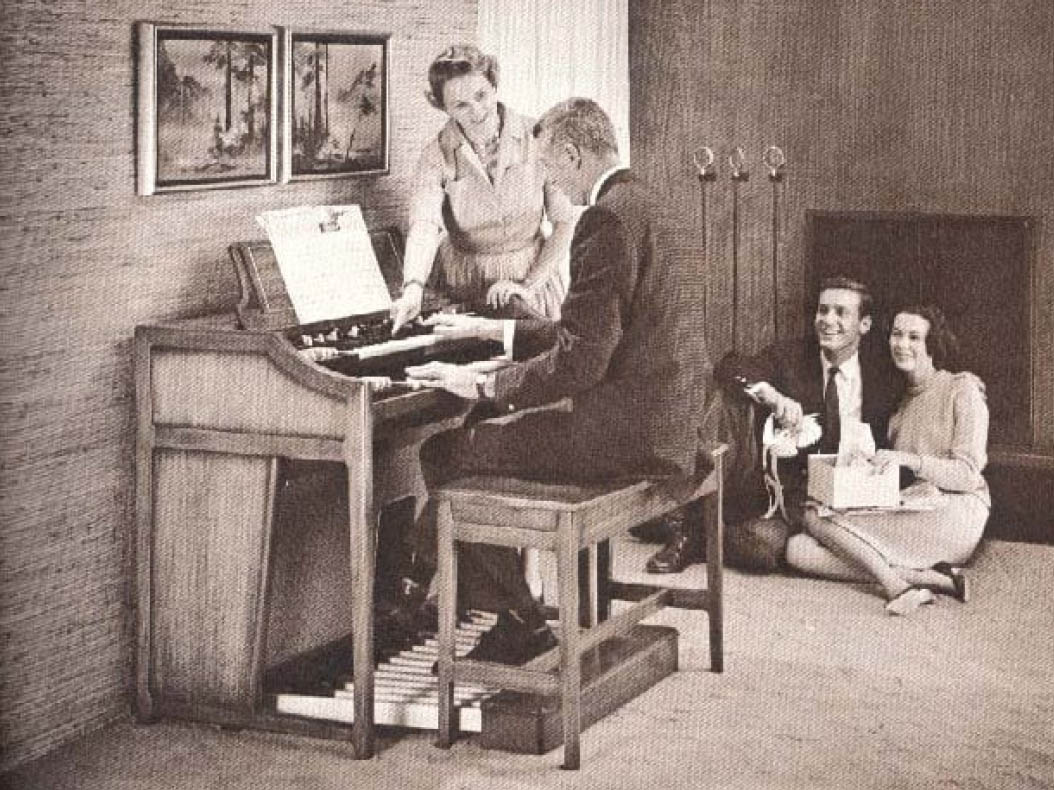
Mechanical
perfection
B-3 V emulates every step of this machine’s complex mechanical process for a virtual instrument that doesn’t just sound like the real thing - it behaves like it too.
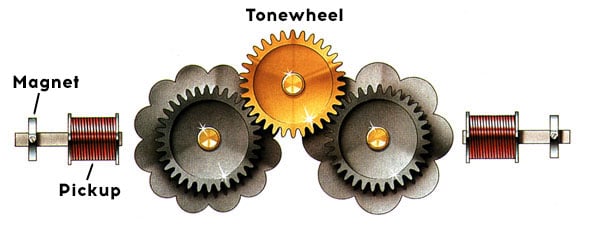
The B-3 V’s namesake was electromechanical, combining spinning tonewheels with pickups to produce flute-like tones in octaves and harmonics for each note. These could be variably mixed via a set of 9 drawbars per manual for a variety of additive timbres, from soft and airy to pronounced and resonant.
But the B3 had a number of distinguished features up its sleeve. The percussion feature, which added a quickly-decaying sound at the second or third harmonic, gave each key press an edgy attack, perfect for solos and rhythmic playing. The unique modulation feature offered three different depths of vibrato or intensities of chorus.
The B to
a Tee
Control layout and appearance exactly like the original.
When you’re emulating an instrument this legendary, there are some things you just don’t mess with. That’s why the drawbars, rocker switches, and other controls are located exactly where organists expect them to be. They look the part, too.
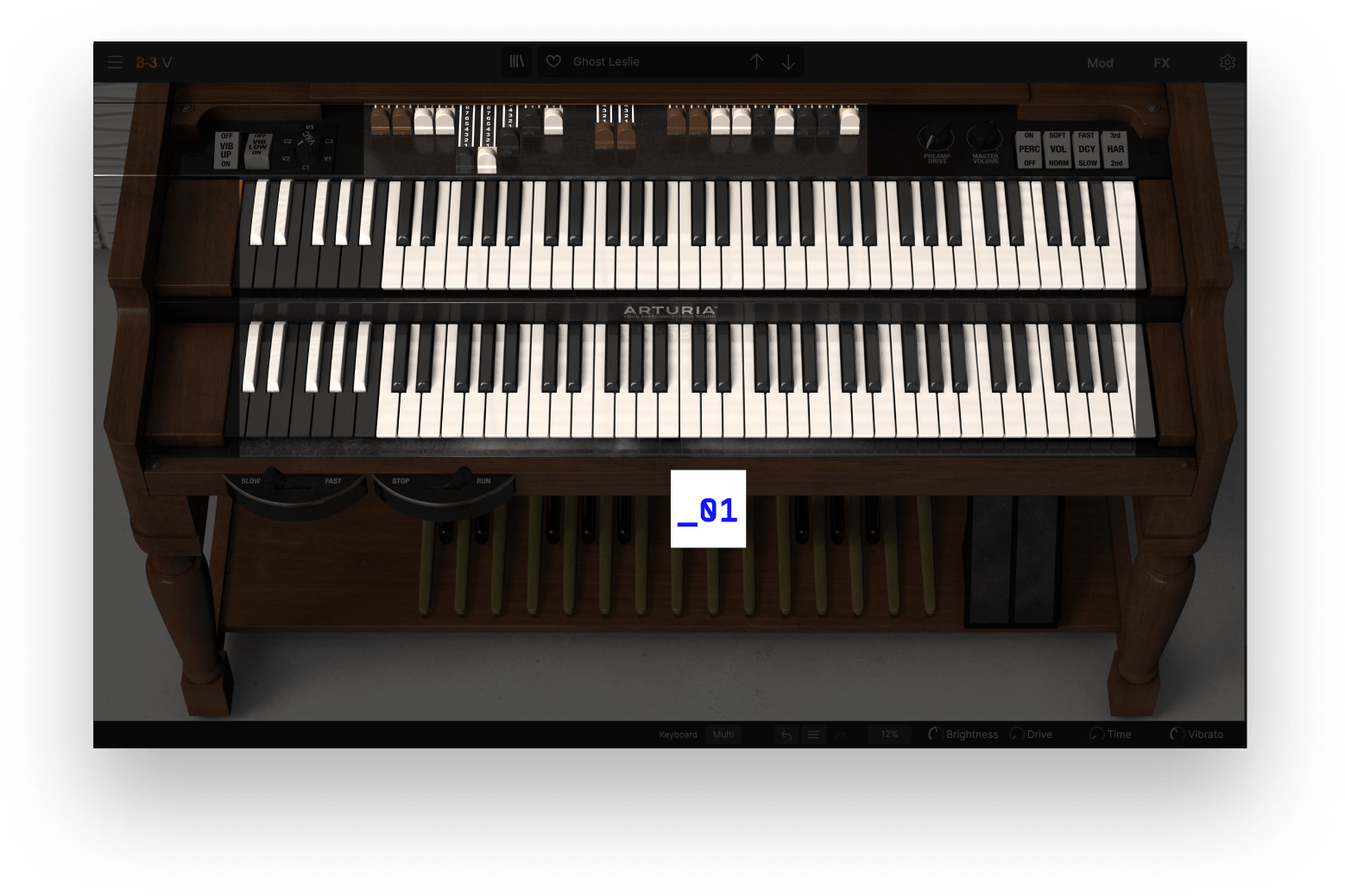
Upper, pedal, and lower drawbars proceed left to right across the center.
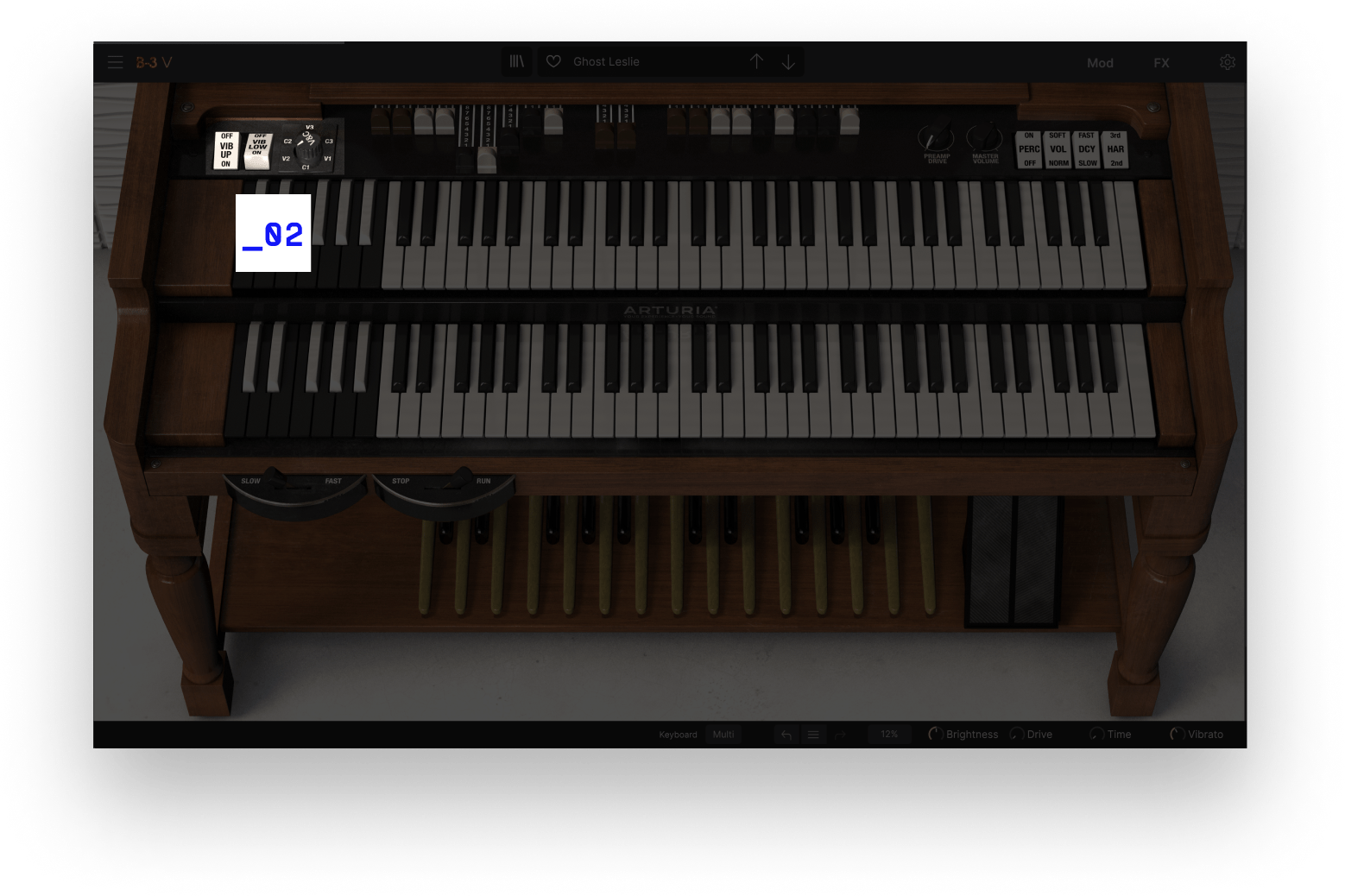
The mechanical scanner vibrato is exquisitely modeled and assignable to the upper and lower/pedal manuals separately. Chorus modes duplicate the ever-popular thickening effect.

The single-triggered ping so endemic to jazz and rock solos is likewise captured, with tabs for on/off, volume, decay, and harmonic at the upper right.

Realistic “half-moon” switches toggle the rotary speaker’s slow (chorale) and fast (tremolo) speeds, or stop the spinning altogether — an effect used by fusion organist Brian Auger.

Turn up the warm crunch of the original AO28 tube preamp with this Arturia exclusive.
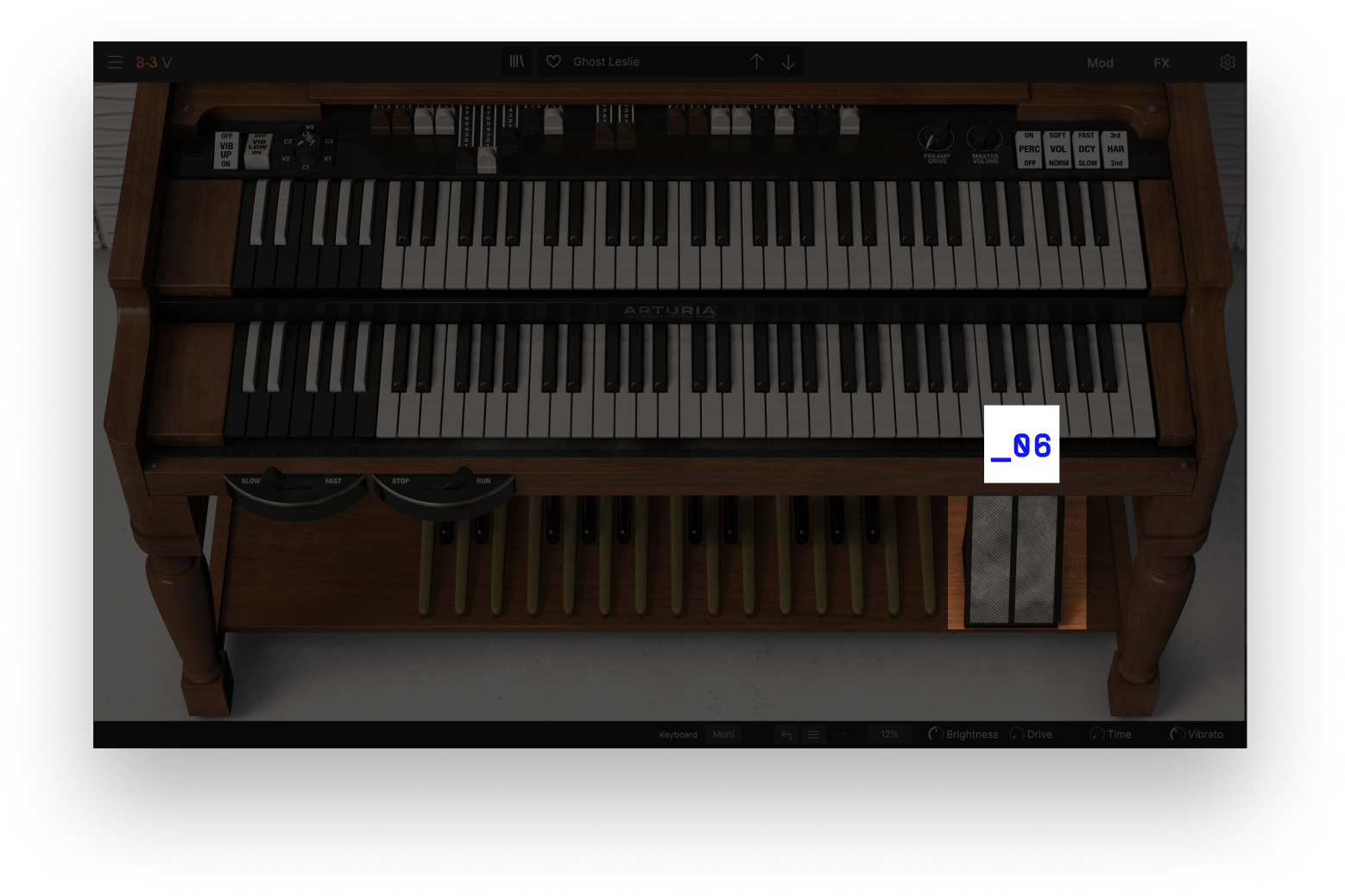
Like the original, it preserves more low frequencies at softer volumes, optimizing the sound for how the human ear perceives loudness.
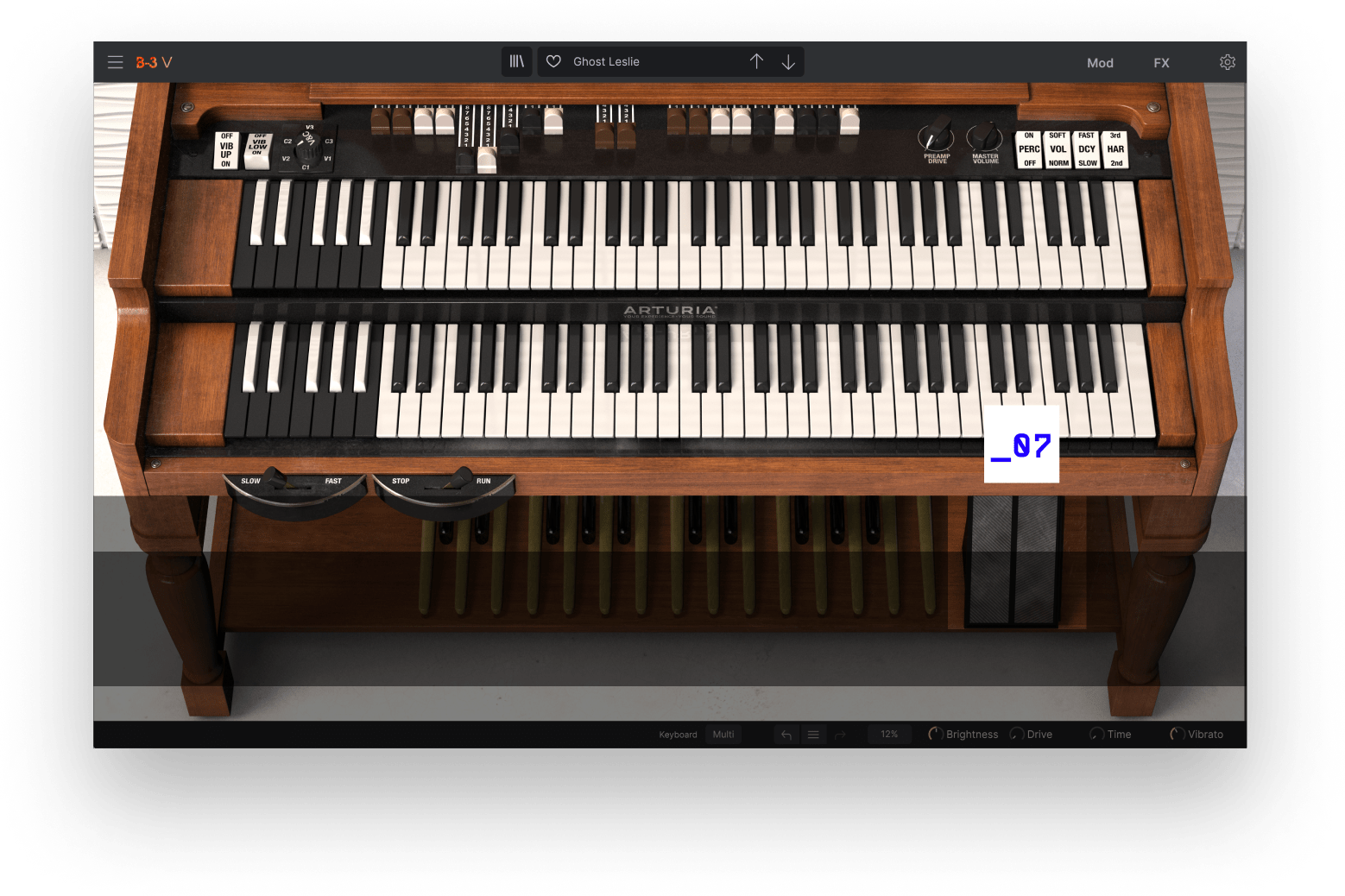
Create the ultimate organ controller rig by addressing the upper, lower, and pedal manuals on separate MIDI channels.
Modern
Mods
Today’s tech makes this B better.
The Mod panel gets you under the hood of B-3 V in ways that would have required a soldering iron on the original — or not been possible at all.
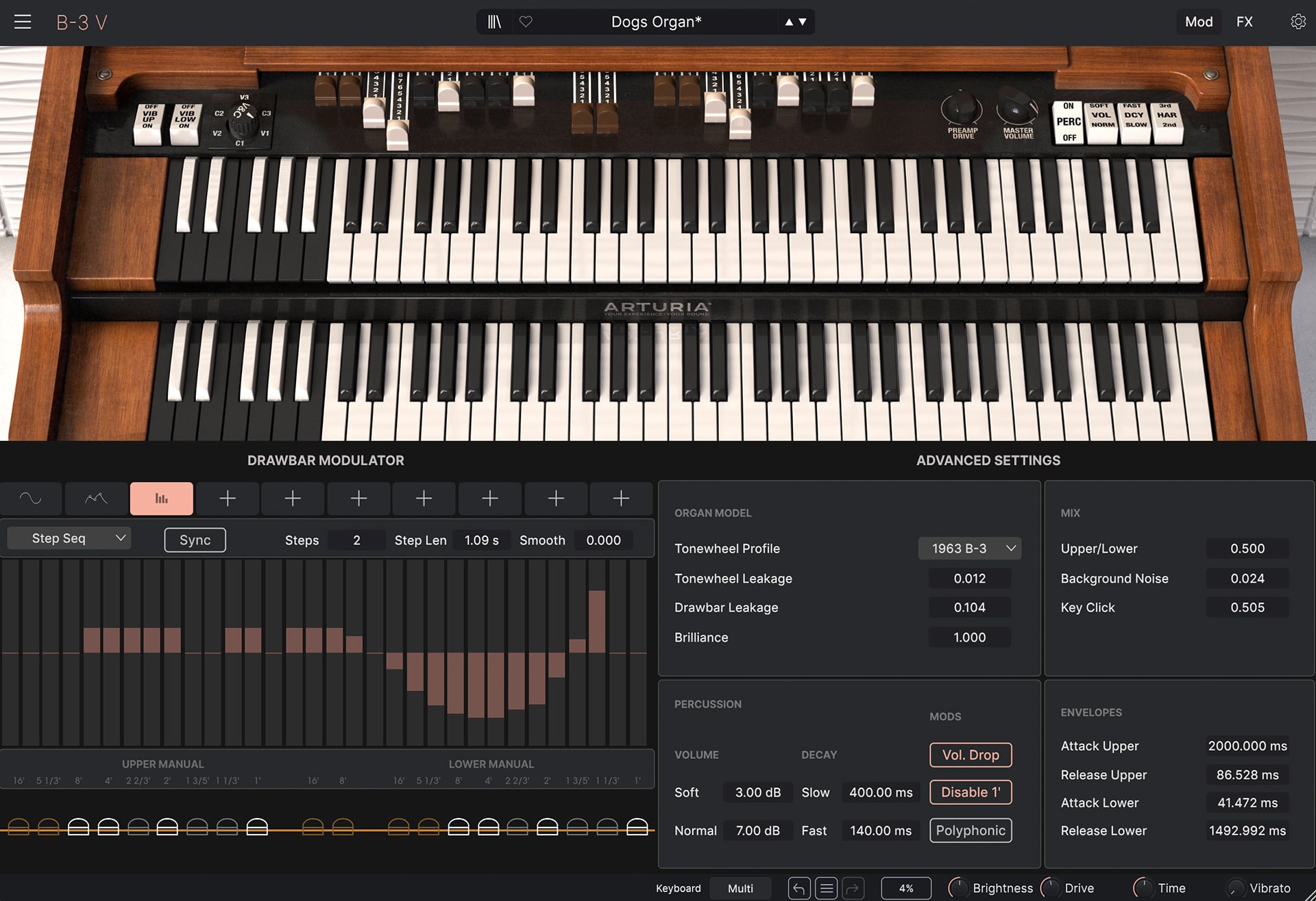
_1
_2
_3
_4
_5
01. Organ Model
Go back in time with several vintages and models, and control exactly how much leakage (tonewheels and drawbars being picked up by their neighbors) occurs.
02. Percussion
Set exact decay times for the harmonic percussion, plus whether it drops the upper manual’s volume and/or “steals” the 1' drawbar as it did on the hardware.
03. Mix
Balance the upper and lower manuals and all-important Key Click, a slight static pop beloved by jazz and rock players.
04. Enveloppes
Keep the instant on/off envelope of the classic, or increase attack and release times for more of a church organ sound
05. Drawbar Modulator
This powerhouse tool is like having up to ten extra hands to work the drawbars as you play, with movement from an LFO, multi-point envelope, or step sequencer.
A Studio Worth of
FX Power
Tweak the rotary speaker, rack up a pedalboard, and put B-3 V in virtual acoustic spaces.
B-3 V’s generous FX section lets you design the finished organ sound in your mind’s ear, all within a single instance of the plug-in.

Switch between Rotary Speaker and Twin Amp modes for ultimate tonal flexibility. Shape your sound with drive, reverb, EQ, and tremolo controls, delivering authentic vintage warmth.
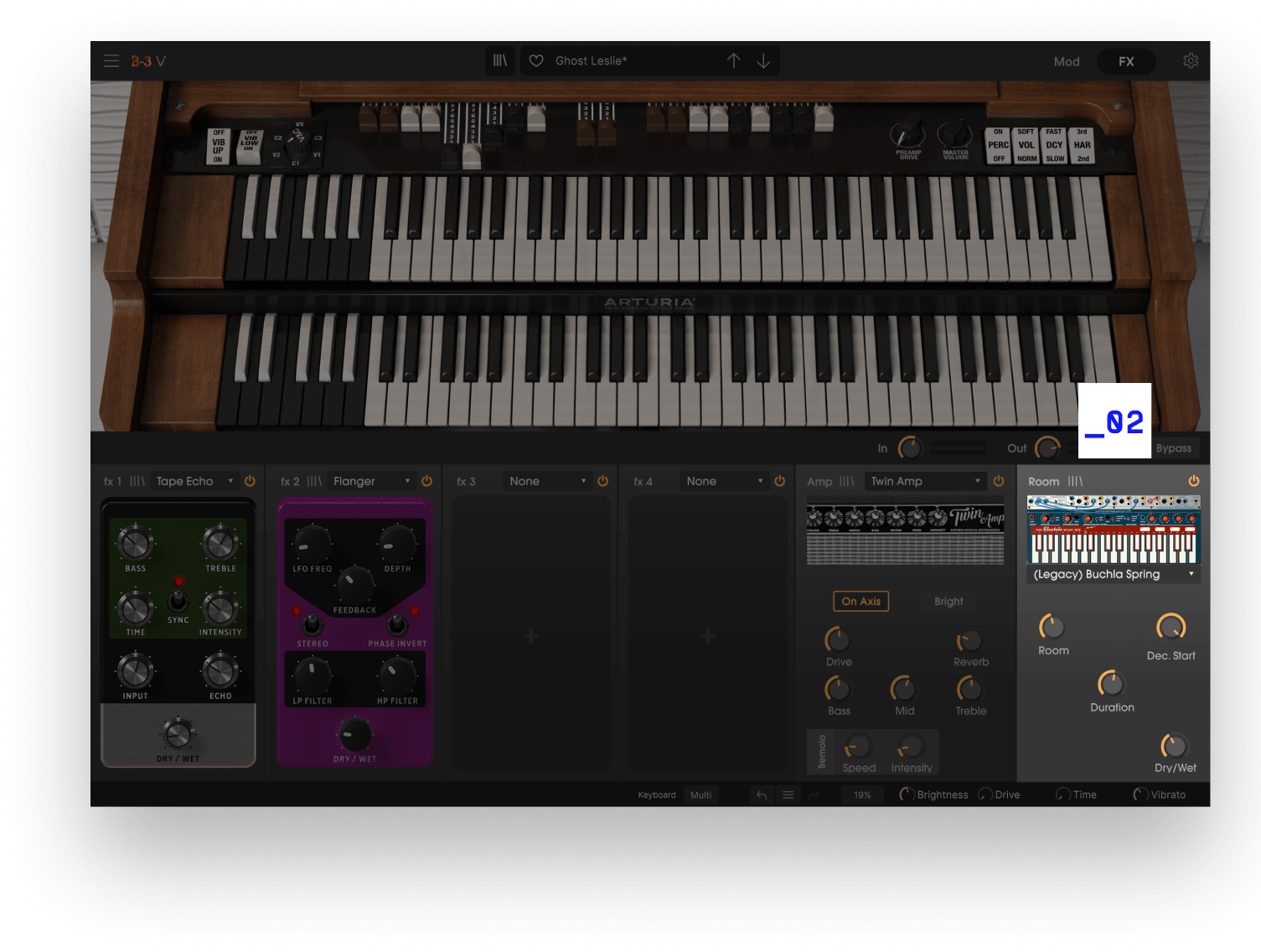
Pick a room for the ideal ambience. B-3 V also simulates plate, spring, and modern hardware studio reverbs.

13 effects profiles to choose from to enhance and personalize the tone of B-3, from spatial effects, to distortion, dynamics and sound-widening modulations.
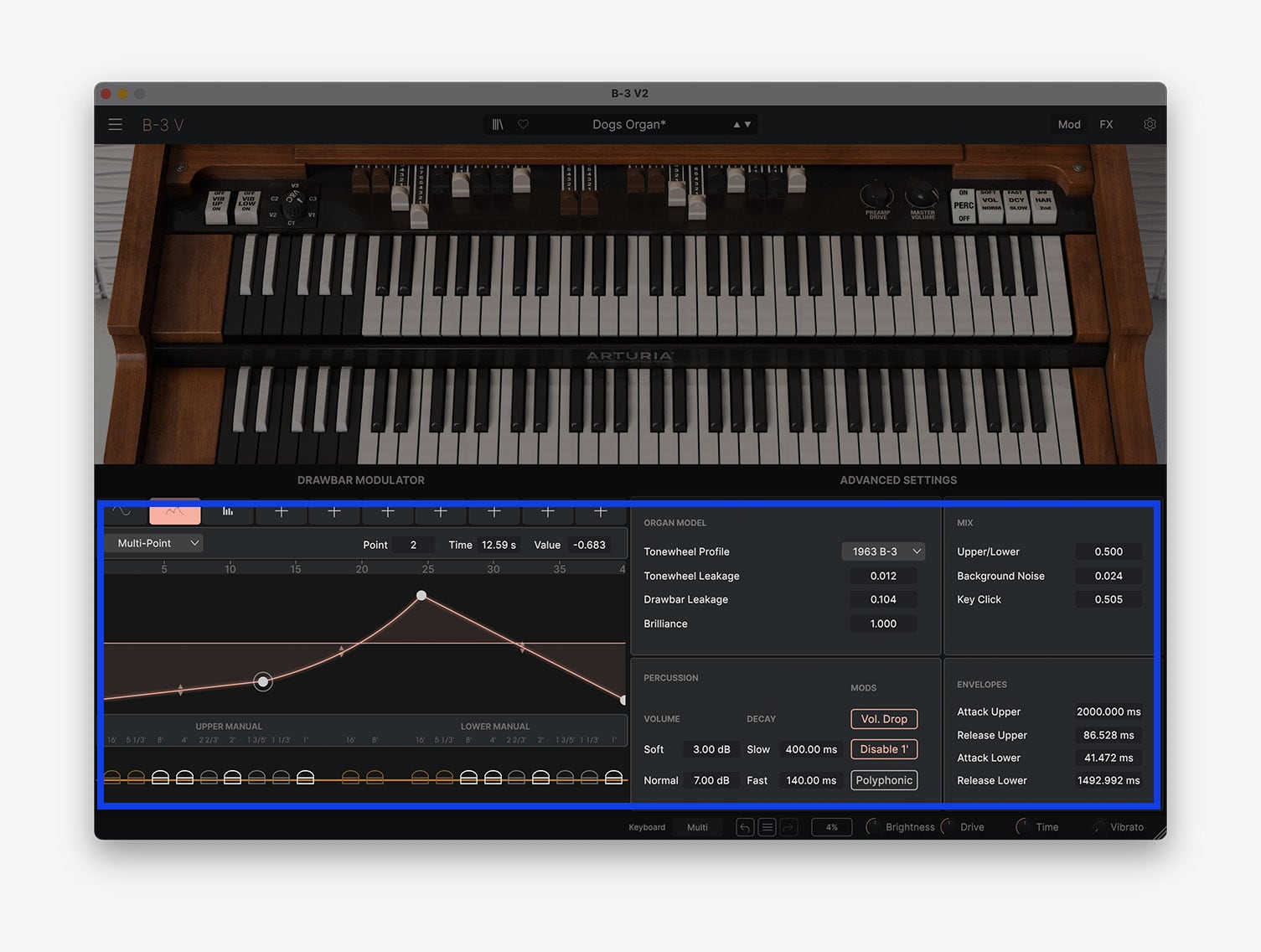
Go back in time with several vintages and models, and control exactly how much leakage (tonewheels and drawbars being picked up by their neighbors) occurs.
Écoutez-le
en situation
Part of what made the B so appealing was its flexibility — with the right drawbar settings it could work in literally any style of music.
These sound demos show how B-3 V is more flexible still.
Last Minute_Jam
Organ from the B-3V using one of the classic presets. Bassline comes from Mini V3. Electric piano sounds courtesy of the Stage-73 V.
Black Bug
Classic 60s Organs
Classic 70s Organs
Snake Eyes
Low B
Presets
Explore creations by the world’s foremost sonic artisans with B-3 V’s easy easy-to-use Preset Browser.
We are privileged to work with some of the best sound designers in the world. Search, tag, and filter their wares by type and style, and experience just how many different organs B-3V can be. Then, create your own Presets and add rich descriptions!

Artistscorner

Inclus dans
V collection
Les claviers de légende réinventés
Cet instrument fait aussi partie de la fameuse V Collection, qui regroupe de nombreux synthés de légende, d’orgues, de pianos et autres claviers qui ont fait l’histoire de la musique. Ils ont été modélisés avec les technologies les plus pointues pour un réalisme frappant, tout en bénéficiant de l’ajout de nouvelles options créatives. La V Collection met à votre disposition les meilleurs claviers de tous les temps, que ce soit en tant que plug-ins dans un DAW, ou en tant qu’instruments individuels autonomes sur scène.
Plus d’infos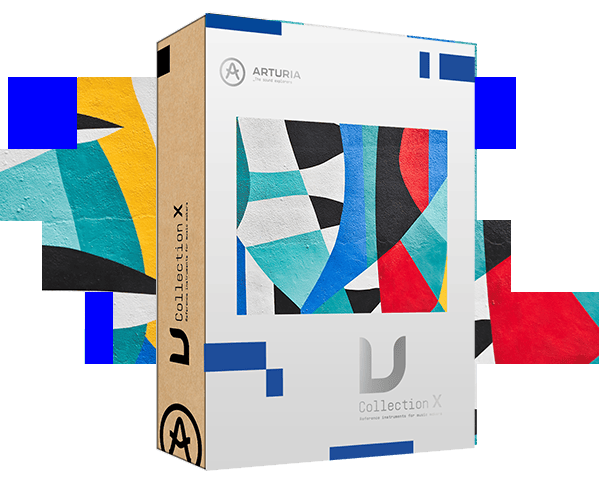
Toutes les fonctionnalités
dont vous avez besoin

Les tutoriels intégrés détaillent chaque aspect de l’instrument, des différents paramètres aux conseils de nos designers sonores, pour que vous puissiez vous concentrer sur votre créativité. C’est simple comme bonjour !

L’Arturia Software Center vous sert à télécharger, organiser et mettre à jour tous vos logiciels d’Arturia au même endroit, ou encore à gérer toutes vos licences sur plusieurs appareils. Plus c’est simple, mieux c’est.

Nos instruments virtuels et nos plug-ins sont conçus pour s’intégrer facilement à votre installation. Quel que soit votre style, vous pouvez expérimenter tout en profitant d’une parfaite compatibilité avec les principaux DAW, aussi bien sur Windows que sur macOS.

Ne passez pas des heures à chercher le son que vous avez en tête. Le navigateur intelligent vous permet de trier les presets par mots-clés, par type d’instrument, style musical, etc. Vous pouvez même sauvegarder vos sons favoris pour les rappeler instantanément dès que vous en avez besoin.

Vous voulez profiter de nos émulations d’instruments classiques avec une immersion visuelle totale ? Vous préférez économiser un peu d’espace sur votre écran ? Les interfaces de tous les instruments virtuels d’Arturia peuvent être redimensionnées à la taille qui vous convient.

Les paramètres des instruments sont directement assignés aux commandes des claviers de la gamme KeyLab d’Arturia, mais ils fonctionnent aussi très bien avec d’autres contrôleurs MIDI. Vous bénéficiez ainsi de macros pour modifier instantanément le son, d’une intégration facile avec le DAW et d’un fonctionnement indépendant.
Le pouvoir de la TAE®
C’est la TAE®, notre technologie de modélisation analogique, qui permet de reproduire fidèlement les sonorités des instruments et des effets dont nous nous inspirons pour nos logiciels.
En reproduisant avec précision les caractéristiques des oscillateurs analogiques, des filtres et de l’écrêtage doux, nous conservons dans nos logiciels le charme du son propre aux machines analogiques, ainsi que leur caractère lié aux différents composants électroniques qui les constituent.
Plus d’infos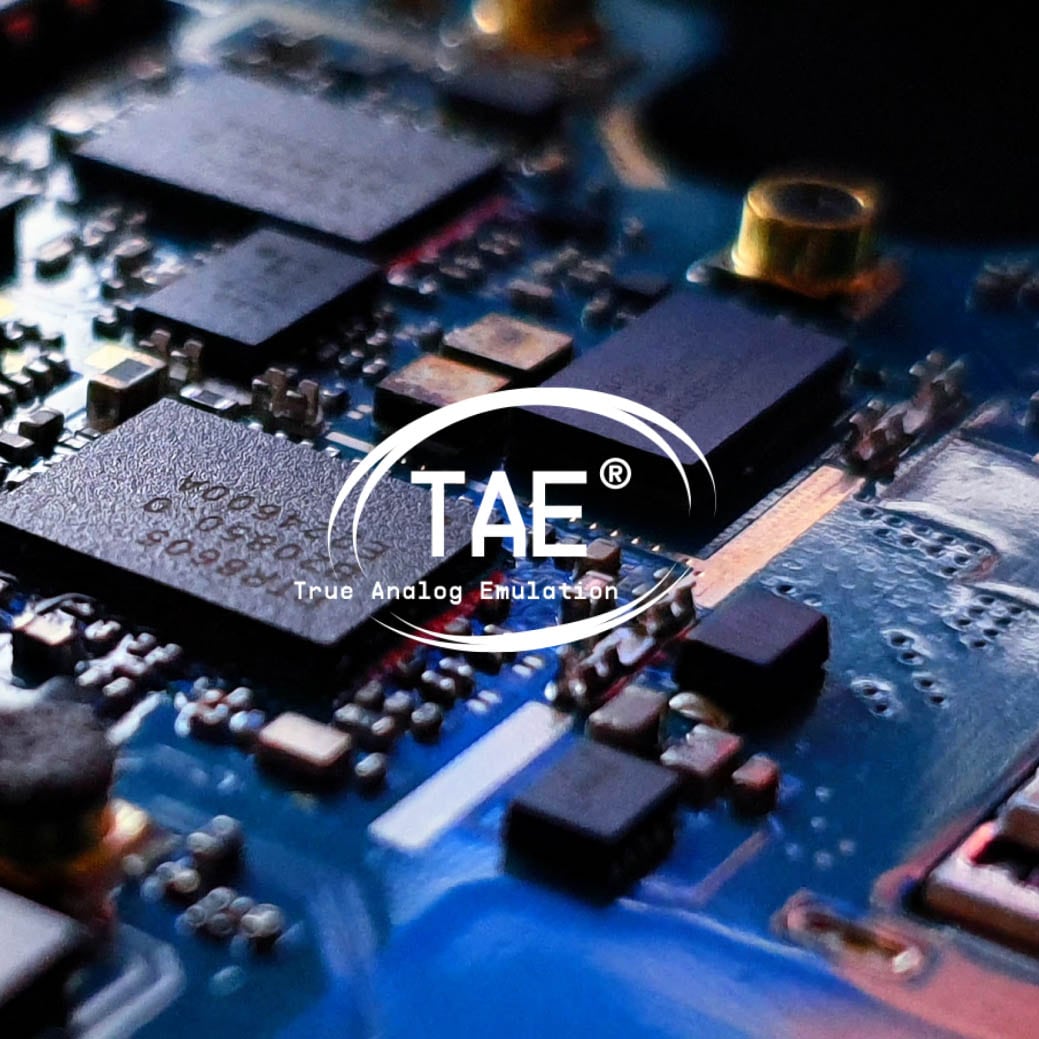
Galerie
Caractéristiques principales
Physical Modeling Engine (no samples)
Dual manual Interface
Each manual has separate MIDI channel preferences
9 Drawbars per manual
3 modeled chorus and vibrato settings
Separate upper and lower ON/OFF
Preamp drive
Modeled rotary speaker emulator
Advanced controls for adjusting the model
Convolution based Reverb
Traditional Leslie performance controls
Swell pedal
Percussion controls
- On/off
- Volume soft/normal
- Slow/Fast decay
- Harmonic selection
Output effects where you can change the order
- Volume, wah, auto-wah
- Flanger
- Compresseur
- Chorus
- Délai analogique
New Advanced Drawbar modulators
- LFO’s with multiple waveforms and phase
- Multipoint envelopes
- Step sequencer
- Drawbar destinations with positive and negative amount controls
Mod view
- Drawbar leakage
- Tonewheel leakage
- Brilliance
- Background noise
- Polyphonic Percussion
- Key click volume
- Attack and release controls
50 factory presets
Easy to use MIDI mapping
Exigences techniques
Windows
- Win 10+ (64bit)
- 4 GB RAM
- Processeur quadricœur, 3,4 GHz (4,0 GHz Turbo-boost)
- 3 Go d'espace libre sur le disque dur
- Processeur graphique compatible avec l’OpenGL 2.0
- Ne fonctionne pas avec les processeurs ARM sous Windows
Configuration requise
- Logiciel standalone, plug-in VST, AAX, Audio Unit et compatibilité avec le NKS (DAW en 64 bits uniquement)





Apple
- Mac OS 11+
- 4 GB RAM
- Processeur quadricœur, 3,4 GHz (4,0 GHz Turbo-boost) ou processeur M1
- 3 Go d'espace libre sur le disque dur
- Processeur graphique compatible avec l’OpenGL 2.0
Compatible avec l’ASC
- L’Arturia Software Center est un outil qui vous permet d’installer, d’activer et de mettre à jour facilement nos logiciels.
Tous les noms de fabricants et de produits mentionnés sur cette page sont des marques commerciales appartenant à leurs propriétaires respectifs, lesquels ne sont en aucun cas associés ni affiliés à Arturia. Les marques commerciales d’autres fabricants sont utilisées aux seules fins d’identification des produits de ces marques, dont les caractéristiques et le son ont été étudiés durant le développement. Tous les noms des équipements, inventeurs et fabricants ont été uniquement inclus à titre illustratif et éducatif, et ne suggèrent en aucun cas une affiliation ni une approbation de la part des inventeurs ni des fabricants des équipements.

